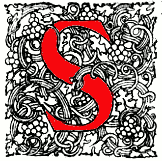
ome of the earliest workers for women's rights drew a very hard and fast line between women's social rights and their political rights, between the rights of single women and their married sisters, between women's public rights and their private ones. The strength of the later antisuffrage movement came from women who were some of the ablest leaders in social reform: Octavia Hill, Maria Rye, Mary Ward, Emily Faithfull. The the Victoria Magazine indicates that the latter worked with near ferocious zeal for the rights of unmarried women. But when the sacredness of the family was threatened, every other consideration was overridden by this prime social good. The main argument advanced by the antisuffragists was that the political married woman would neglect her ma^or social responsibility, the care of home and family. [117, 119]
Bibliography
Westwater, Martha. The Wilson Sisters: A Biographical Study of Upper Middle-Class Victorian Life. Athens: Ohio University Press, 1984. [The photograph appears on p. 118.]
Last modified 2 May 2009